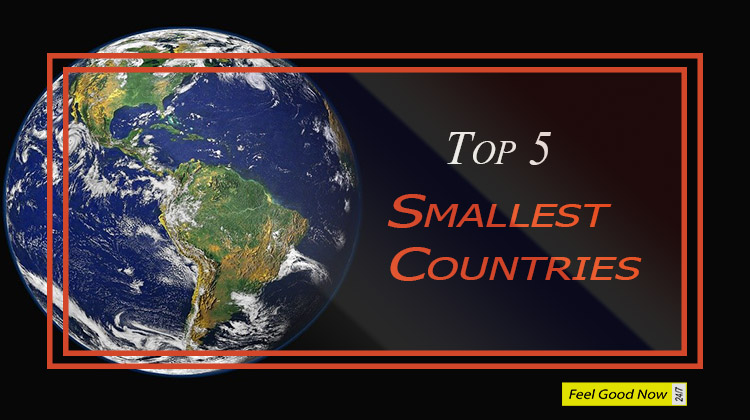
We all know that the world is getting smaller and smaller due to the faster transport options, technology, and the internet. But still, in this small world, the diversity of food, culture, people, climate, language, laws, etc., remains. We instantly experience the stark difference in all these things when we move from one country to another. In this article, let us see the top 5 smallest countries in the world and learn some of their interesting info.
We will see the countries in the reverse order, i.e., from the 5th smallest to the smallest one.
5. San Marino
San Marino is the 5th smallest country in the world.
San Marino is officially known as the Republic of San Marino. It has an area of 61.2 sq. kilometers ( 23.6 sq. miles)
The country is located in southern Europe and is surrounded by Italy on all sides.
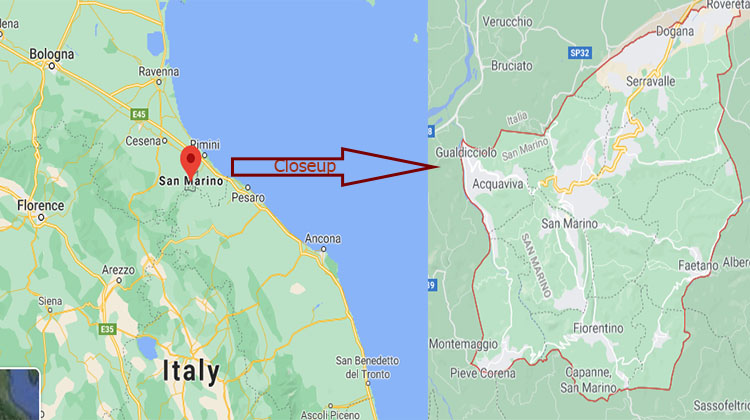
| Area | 61.2 sq. km or 23.6 miles |
| Population | 33,562 |
| Continent | Europe |
| Capital | City of San Marino |
| Language | Italian |
| Currency | Euro |
| Per Capita $ | $60651 (11th highest in the world) |
San Marino became a member of the United Nations in 1992. It is neither a European Union nor a Eurozone member, although it uses the euro as its currency.
The country is part of the Apennine mountain range, and so the area has hilly topography. 97.2% of its population is Roman Catholic by religion.
San Marino Climate
The average summer (May-August) temperature is 20 to 25 degrees Celsius (65-80 degrees Fahrenheit).
The average winter (December-February) temperature is around 5 degrees Celsius (40 degrees Fahrenheit). Snowfalls can be seen in winter.
San Marino Economy, Transport
Banking, electronics, and ceramics are the main industries here. Wine and cheese are the main agricultural products.
One interesting fact about this country is that it is currently the only country with more vehicles than people. Thus it tops the list of countries with the highest rate of car ownership.
There are no railways or public airports here. International tourists have to enter San Marino via Italy. One railway line did exist for a short period before World War 2, but it was almost destroyed during WW2.
San Marino Sites
Monte Titano is a mountain of the Apennines and is the highest peak in San Marino. It is located immediately east of San Marino’s capital city. It was inscribed as a UNESCO World Heritage Site on 2008 under the combined title, “San Marino Historical Centre and Mount Titano.”
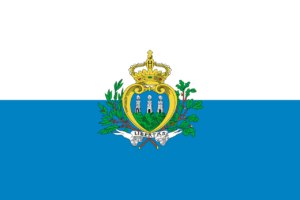
The mountain has three peaks, each with one of The Three Towers of San Marino. These three towers (Guaita, Cesta, and Montale) are also included on The official flag of San Marino.
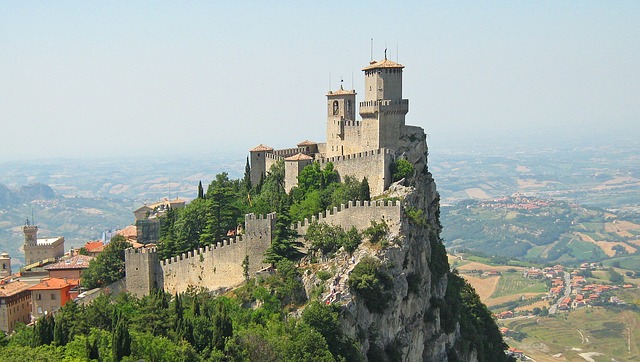
Saint Marinus, who laid the seeds of San Marino around the year 301 on Mount Titano, is always represented in pictures and statues holding Mount Titano in his hands.
San Marino Sports
Even though football is the most popular sport here, San Marino national football team has won only one match in over 25 years. Basketball, volleyball, and baseball are also popular here. It won the European Cup ( annual baseball tournament in Europe ) in 2006 and a runner-up in 2010.
San Marino Food
San Marino cuisine is very similar to Italian (pizza, pasta, etc.). Some dishes unique to San Marino: Torta Tre Monti (Cake of the three mountains) and Piadina
Places to Visit
Let us see some interesting places you can visit when you arrive here as a tourist. By the way, tourism contributes 22% to the country’s GDP.
- Basilica di San Marino, a beautiful catholic church in the capital city.
- Vampire Museum
- Palazzo Pubblico, San Marino (townhall and it’s official government building)
- National Museum, San Marino, and many other places.
For additional tourism information, one can check visitsanmarino.com or sanmarinosite.com
4. Tuvalu
Tuvalu is the fourth-smallest country in the world and was earlier known as the Ellice Islands. It is an island country in the Pacific Ocean between Hawaii and Australia. Tuvalu consists of six coral atolls (ring-shaped reef) islands (Funafuti, Nanumea, Nui, Nukufeatau, Nukulaelae, and Vaitupu) and three reef islands (Nanumanga, Niutao, and Niulakita). Thus it is an archipelago, a group of islands.
It is one of the least visited countries in the world, and there are reports that this small island country is slowly sinking into the water.
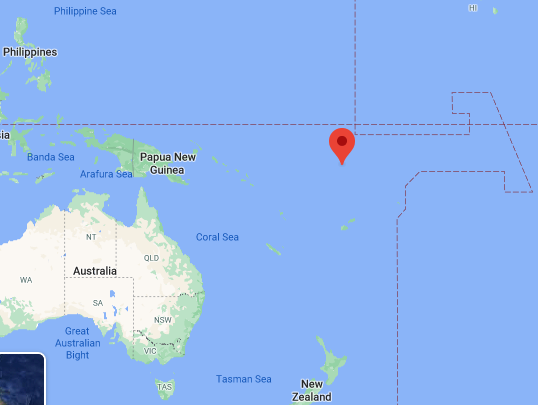
| Area | 26 sq. km (10 sq. miles) |
| Population | 11,646 |
| Continent | Oceania |
| Capital | Funafuti |
| Language | English & Tuvaluan |
| Currency | Tuvaluan dollar & Australian dollar |
| Per Capita $ | $3566 (11th highest in the world) |
Tuvalu History
The Ellice Islands were administered as a British Protectorate from 1892 to 1916 as part of the British Western Pacific Territories (BWPT). Protectorate means a small country controlled and protected by a larger one.
The administration of the BWPT ended in 1916, and the Gilbert and Ellice Islands colony (under the British Empire) was established, which existed until 1976. A referendum held in 1974 led to the formation of two separate British colonies of Kiribati and Tuvalu in 1976.
Tuvalu became fully independent as a sovereign state within the Commonwealth (political association of 54 member states, almost all former territories of the British Empire) on 1st October 1978. This day is celebrated as Tuvalu’s independence day and is a public holiday.
Tuvalu Rising Sea Level
Tuvalu became the 189th member of the United Nations on 5th September 2000. A major international priority for Tuvalu is promoting concern about global warming and the possible rising sea level. The sea level at the Funafuti tide gauge has risen at 3.9 mm per year, almost twice the global average.
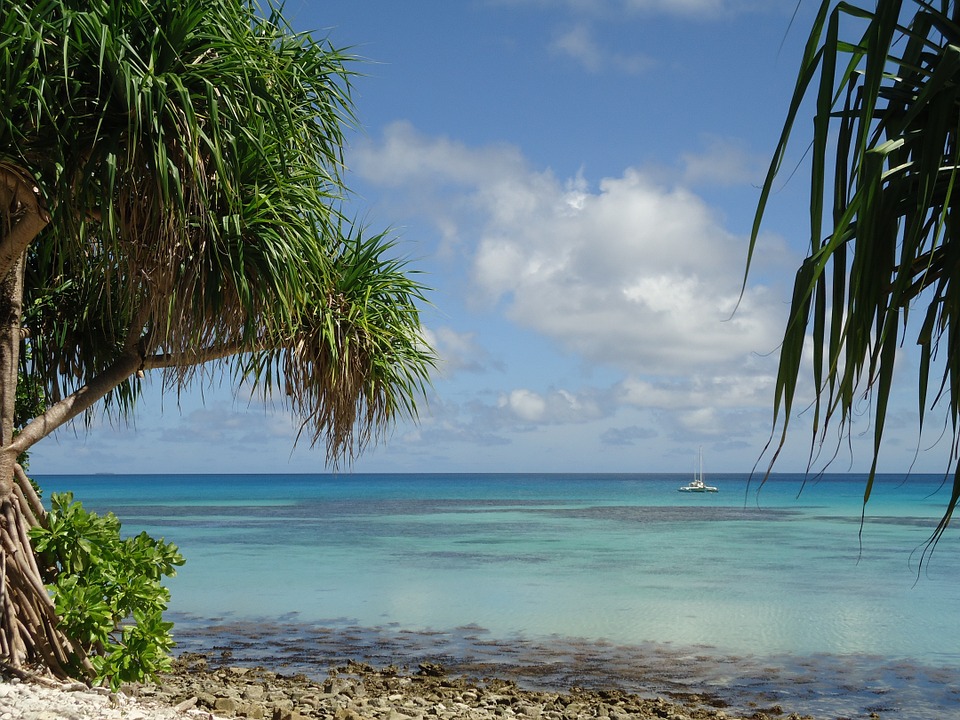
However, the concerns about global warming have still not resulted in much migration out of Tuvalu, as the Tuvaleans prefer to live in the islands for lifestyle, culture, and identity reasons. New Zealand and Australia are the top destinations in the case of migration.
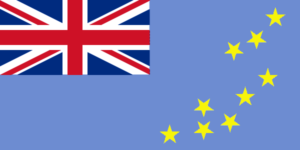
Tuvaluan and English are the national languages. Tuvaluan is distantly related to other Polynesian languages such as Hawaiian, Maori, Tahitian, Rapa Nui, Samoan, and Tongan.
Tuvalu maintains close relations with New Zealand, Australia, Japan, Fiji, South Korea, Taiwan, the USA, the UK, and the European Union.
Tuvalu is also part of the Alliance of Small Island States (AOSIS), an intergovernmental organization of low-lying coastal and small island nations vulnerable to the adverse effects of global climate change.
At its highest, Tuvalu is only 4.6 meters (15 ft) above sea level. It is estimated that a sea-level rise of 20–40 centimeters (8–16 inches) by the year 2120 could make Tuvalu uninhabitable.
Education is free and compulsory in Tuvalu for children between 6 and 15 years. The country has a 99% adult literacy rate.
Tuvalu Culture
Fakaseasea, fakanau, and fatele are some of the major Tuvaluan dances.
Fatele, in its modern form, is performed at community events, to celebrate leaders, and on visits of other prominent individuals.
Fakaseasea dance is mainly performed by women in standing positions while men and women sing and beat the time. It is a slower song with very loose rules on how to dance to it. Dancers mostly dance, moving their hands, arms, and upper body.
Fakanau is performed by men around a circle in a sitting position with arms, hands, and upper body gestures, accompanied by singing and rhythmic clapping. An old dance master at the center of the circle keeps the rhythm. In some parts, the dances are also performed in standing or kneeling positions. It is faster than the fakaseasea and modern fatele. And it is majorly performed for entertainment and ceremonies in places of worship called ‘faleaitu’ (house of gods). Fakanau is majorly performed in fragments during the night rather than just one dance, with the contents of the dance related to the fishing spells or charms in the form of dramatic monologue. The spells include various moods such as calling to the fish, pleading, charming, and even abusing. However, the dance is rarely performed today.
Tuvalu Food
The Tuvaluan cuisine is based on the staple of coconut and the many species of fish found in the ocean and the lagoons and seabirds. The Pulaka crop is the main carbohydrate source, and seafood consists of proteins. Supplemental crops such as Taro, bananas, and breadfruit are also part of the diet.
Tuvalu Sports
Kilikiti, a traditional sport similar to cricket (played with bat and ball), is played in Tuvalu. A popular sport specific to Tuvalu is Ano, which is similar to volleyball but played with two hard balls made from pandanus leaves. Other games such as badminton, football, and athletics are also popular in Tuvalu.
Tuvalu Economy
Government revenues largely come from the sales of fishing licenses and the lease of its ‘.tv’ internet top-level domain. As it is a pretty remote country, tourism is not that significant and is mostly limited to the capital Funafuti, which has an international airport and hotel facilities. Thus Tuvalu is a good destination for Ecotourism, i.e., commercial tourism in natural, pristine, and relatively undisturbed destinations.
Tuvalu Climate
Tuvalu has two distinct seasons, a wet season from November to April and a dry season from May to October. The average high temperature is around 30.3 degrees Celsius (86.5 degrees Fahrenheit) throughout the year, and the average low temperature throughout the year is about 26.9 degrees Celsius (80.5 degrees Fahrenheit).
3. Nauru
Nauru island is the third smallest country in the world, situated in the Pacific Ocean (Micronesia). It was also formerly known as Pleasant Island. Some 3000 years ago, Micronesians and Polynesians first inhabited Nauru.
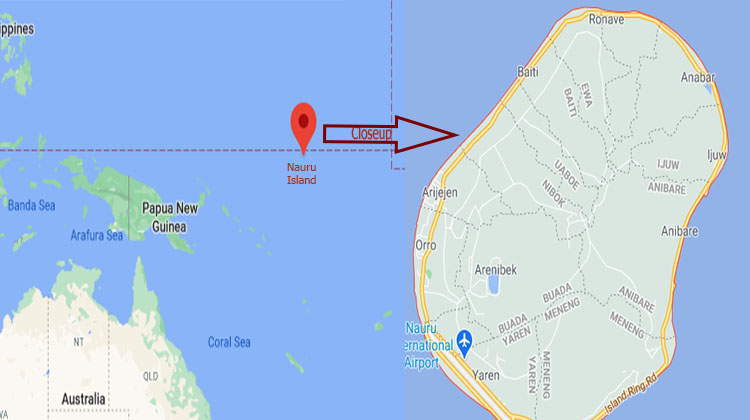
There were traditionally 12 tribes on Nauru that are represented in the 12-pointed star on the country’s flag.
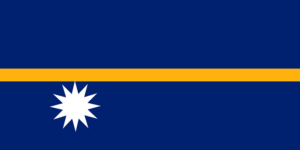
| Area | 21 sq. km or (8.1 sq. miles) |
| Population | 10,670 |
| Continent | Oceania |
| Capital | Yaren |
| Language | Nauruan & English |
| Currency | Australian dollar |
| Per Capita $ | $8570 |
The country is one small island with an area of 21 sq. km (8.1 sq. miles). A ring road goes around the island’s perimeter, about 19 km (12 miles) long. Thus you can take a run around the whole country in just a few hours. The island is surrounded by jagged, sharp coral reefs, which can create holes in the ships. Thus it is difficult to enter the island by the ship. There are only two entry ports, one on the east and one on the island’s west side.
Nauru Phosphate Export
Nauru was known for its rich phosphate reserves used extensively in ceramics, fireworks, fertilizers, etc. In the early 1900s, Germany and Australia first benefited from the rich reserves.
Around the 1970s, Nauru was one of the richest countries in terms of GDP, all thanks to the export of phosphate. But then, in 1990, due to over-mining, almost all of its phosphate reserves ran out, and so the country’s economy collapsed. At one point, it also had to engage in illegal money laundering, selling passports, and taking illegal refugees for money. Australia still operates its detention center for illegal immigrants in Nauru.
A health crisis also followed the economic crisis as the imported packaged food and too much consumerism during the boom led to obesity, diabetes, and smoking habits affecting a substantial portion of the population. Thus the country which used to have one of the highest standards of living in the past is not doing that well these days. Most of its land became arid, and flora and fauna were harmed.
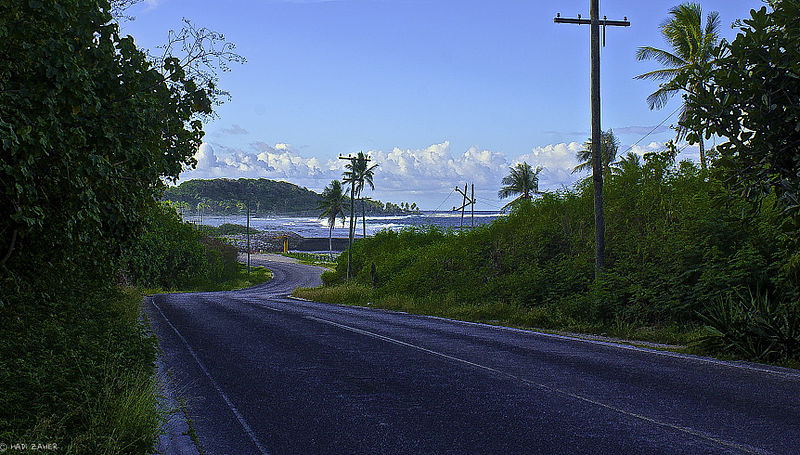
In 1964, because of the damage done to the country due to mining, Australia proposed to shift the entire population of Nauru to another Island, Curtis Island, off the coast of Queensland, Australia, and grant them their Australian citizenship. But the cost of resettling was estimated to be 10 million euros. Also, Nauru rejected the proposal, instead choosing to become an independent nation.
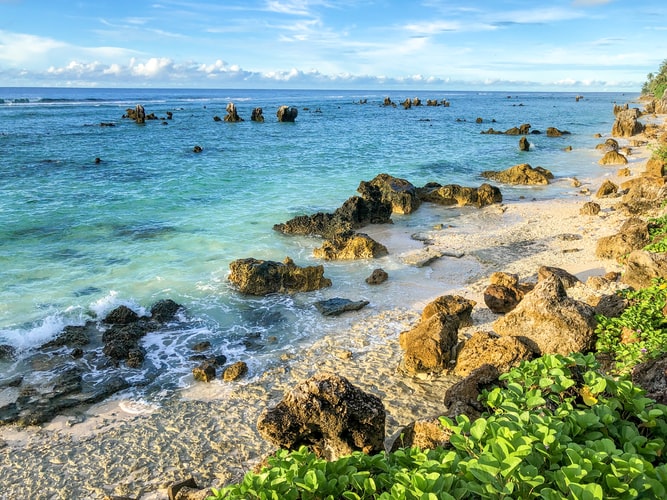
Nauru Vegetation
The country relies on rainwater harvesting and three desalination plants for freshwater supplies. There is a freshwater lake called Buada Lagoon in the Buada district/ The land around the lake supports bananas, pineapples, pandanus trees, vegetables, and indigenous hardwoods such as the tamanu tree (timber from the tamanu tree is useful for making ships and other items).
Fish, coconuts, and pandanus fruit are the main local components of the diet.
Nauru became a member of the United Nations in 1999. City Yaren has the parliament and the international airport and is considered the country’s capital.
Nauru Culture & Sports
Independence day is celebrated on 31st January. While 26th October is also a major public holiday & is called Angam Day. The Nauruan word ‘Angam’ means “jubilation,” or “to have triumphed over all hardships,” or “to have reached the set goal” or “coming home.” It celebrates the recovery of the Nauruan population after the two World Wars and the 1920 influenza epidemic.
The main religion practiced here is Christianity.
Australian football is the most popular sport here. Weightlifting, volleyball, netball, fishing, and tennis are played here.
Nauru Climate
Nauru island is close to the equator. So the climate is hot and humid round the year. It is hit by monsoon rains between November and February but rarely experiences cyclones. The temperature on Nauru ranges between 30 and 35 °C (86 and 95 °F) during the day and is relatively stable at around 25 °C (77 °F) at night.
2. Monaco
Monaco (officially, the Principality of Monaco) is second on the list of smallest countries. It is in Western Europe, bordered by France to the north, east, and west, and the Mediterranean Sea to the south. Its center is about 13 km (8.1 km) from Nice, France, and 16 km (9.9 miles) from Italy.
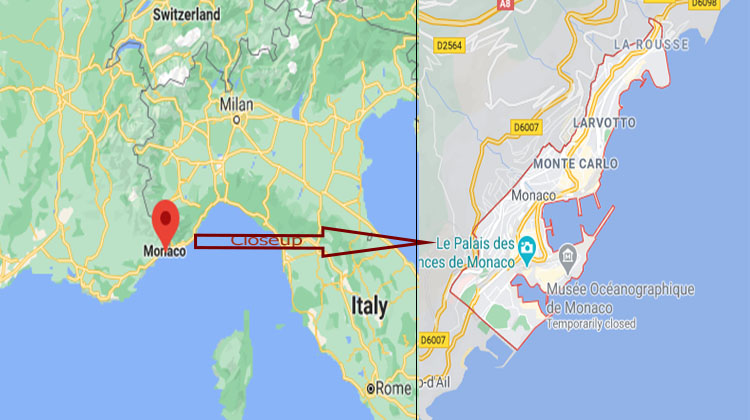
| Area | 2.1 sq. km or 0.81 sq. miles |
| Population | 38,682 |
| Continent | Europe |
| Capital | Monaco |
| Language | French |
| Currency | Euro |
| Per Capita $ | $115,700 (3rd highest in the world) |
Monaco became a member of the United Nations in 1993. It is one of the most expensive and wealthiest places in the world. Many rich people in Europe choose Monaco to settle down after retirement. Also, it is the most densely populated country in the world. Monaco has close ties with France on political, financial, cultural, and other fronts. The French military takes care of the defense of Monaco. Monaco, however, has a large police force.
Monaco has one of the world’s oldest national flag designs, adopted on 4th April 1881. The flag is very similar to Indonesia (adopted by Indonesia on 17th August 1945).
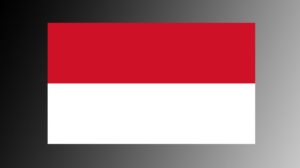
Monaco Tourism
The country is famous for its casinos. But only tourists are allowed to spend money in casinos. The country’s first casino, Monte Carlo, opened in the late 19th century and spurred economic development. Monaco’s mild climate, scenery, and gambling facilities have made Monaco a popular tourist destination and recreation center for the rich.
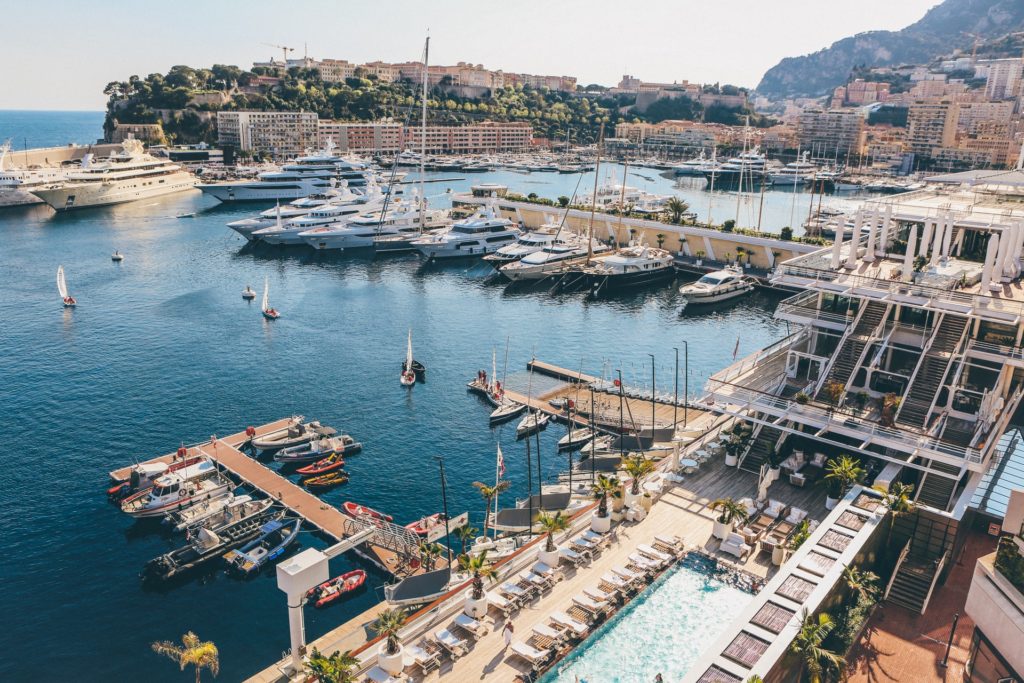
Additionally, Monaco has no income tax and low business tax and thus is a well-known tax haven. No wonder some of the richest people flock to Monaco to settle down. More than 30% of the resident population are millionaires. One reason for no tax could be the extraordinary success of the casino business. However, due to a bilateral treaty with France, French citizens who reside in Monaco must still pay income and wealth taxes to France.
Monaco Events
Monaco is famous for its annual formula one racing event – Monaco Grand Prix. The race has been held annually in Monaco since 1929. Monaco also grasped a lot of world attention when Rainier III, the Prince of Monaco, married the American actress Grace Kelly on 19th April 1956. The event was widely televised and covered in the press. Rainier III ruled the principality from 1949 to 2005 till his death. Thus he ruled for 56 years, making him one of the longest-ruling monarchs in European history. His son, Albert II, succeeded him as the Sovereign Prince of Monaco.
Monaco Architecture
The architecture in Monaco, particularly in Monte Carlo, is of the Belle Epoque Style (French period from 1880 to 1914). Decorative elements include turrets, balconies, pinnacles, multi-colored ceramics, and cartiyards. These elements together create a beautiful fantasy of pleasure and luxury, giving an alluring feel to Monaco. However, due to the limited area of the country and high population, many new high-rise buildings seem to be slowly affecting the country’s traditional architectural style and overall feel. Monaco has one of the most expensive real estate markets.
Monaco Climate
Monaco’s climate is hot but pleasant in summer, and the winters are mild and rainy. The average annual high temperature is around 20 degrees Celsius (67 degrees Fahrenheit), and the average annual low temperature is 13.6 degrees Celsius (56.5 degrees Fahrenheit). The temperature can reach its peak of around 30 degrees Celsius from May to October and its average low of 9 to 5 degrees Celsius from December to March. Snowfalls are rare; they happen only once or twice every ten years.
Monaco Economy, Sports, and Culture
Tourism, casinos, banking, cosmetics, biothermics, fishing, etc., are some major industries in the principality. Monegasques are a minority in their country. French nationals (28.4 % of the population) are the largest group, followed by Monegasque (21.6%), Italian (18.7%), British (7.5%), Belgian (2.8%), German (2.5%), Swiss (2.5%) and the U.S. nationals (1.2%). Monaco has the world’s highest life expectancy at nearly 90 years. 86% of the population are Christians.
Apart from Formula One, Formula E, Football, Rugby, Basketball, Golf, and Tennis are some other popular sports in Monaco. Monaco has an opera house, a symphony orchestra, and a classical ballet company. The New National Museum of Monaco features contemporary visual art.
Click the button below to read the interesting info about the smallest country in our list of the top 5 countries worldwide.
1. Vatican City
Vatican City is the smallest country in the world but still very influential and famous internationally. Officially known as the Vatican City State, the country became independent from Italy with the Lateran Treaty (1929). It also has the smallest population (825). As the Vatican City State is an enclave within Italy, Italy provides military support to it. Like Singapore, Vatican City is its own country, state, and city. It has a perimeter of just 3.2 km (2 miles). The government is so small that you can walk around the country in just 45 minutes.
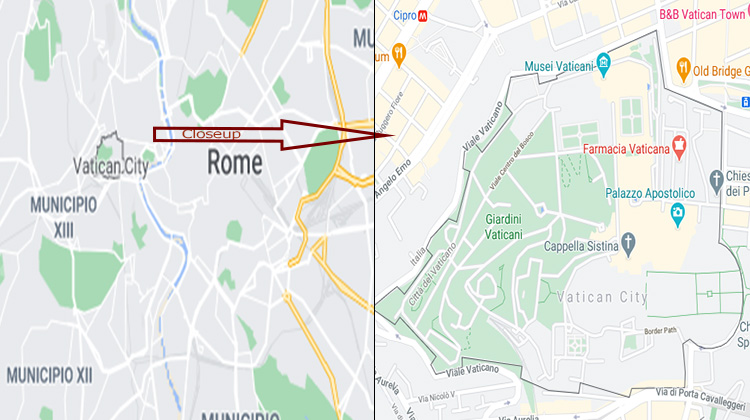
| Area | 0.49 sq.km or 0.19 sq. miles |
| Population | 825 (as of 2019) |
| Continent | Europe |
| Capital | Vatican City |
| Language | Italian |
| Currency | Euro |
| Per Capita $ | NA |
Pope and The Holy See
The country is ruled by the Pope, the bishop of Rome, and the head of the Catholic Church. Pope is also the King of the country and functions as the Pope or the King depending upon the situation, thus making Vatican City State an ecclesiastical or sacerdotal-monarchical state (where religious leaders exercise jurisdiction). Vatican City is one of the six absolute monarchies remaining in the world ( Vatican City, Brunei, Oman, Qatar, Saudi Arabia, Swaziland ). That also means Vatican City cannot join the European Union, as only democratic nations are allowed in the EU.
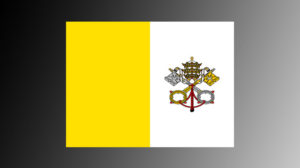
The throne on which the Pope sits is called the Holy See. When the Pope retires or dies, a new Pope is elected who sits on the Holy See. Thus Popes come and go, but the Holy See remains. Interestingly, the Holy See is included as a member of the United Nations and not the country.
Only the King (i.e., the Pope) can approve the Vatican City citizenship, and one does not get Vatican citizenship by birth. Most of the citizens work in the service of the Holy See. Anyone who loses Vatican citizenship or has no other citizenship automatically becomes an Italian citizen as per the Lateran Treaty.
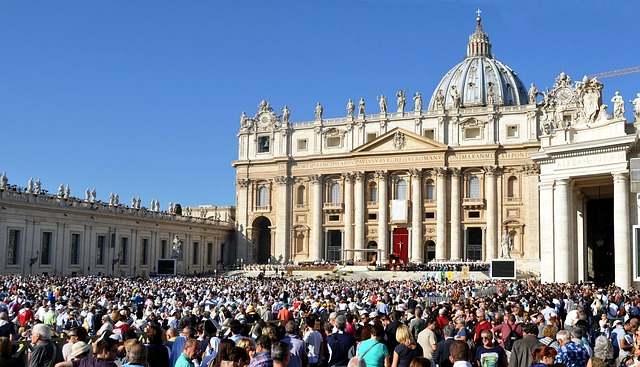
Vatican City Tourism
Vatican City hosts famous religious and cultural sites such as St. Peter’s Basilica, the Sistine Chapel, and the Vatican Museums. There, you can find some of the world’s most famous paintings and cultures. When it comes to sports, football is a popular sport here.
Vatican City Climate
The climate here is the same as in Rome, a temperate climate with mild, rainy winters from October to May. The average daily temperature from October to May is around 5-10 degrees Celsius (40-50 degrees Fahrenheit). The summers from May to September are hot and dry. The average daily temperature from May to September is around 17-24 degrees Celsius (63-76 degrees Fahrenheit).
Vatican City Economy
The unique economy of Vatican City is supported financially by donations from the faithful, the sale of postage stamps, coins, medals, and souvenirs, fees for admission to museums, and sales of publications.
Alright, we saw the top 5 smallest countries in the world and their interesting info. We learned a bit about the interesting histories of these countries and some interesting things about their culture, climate, laws, food, etc. We hope you enjoyed reading the article. If you want to share more interesting information about these countries, do so in the comments section below.
Sources:
- https://en.wikipedia.org/wiki/Monaco
- https://en.wikipedia.org/wiki/Vatican_City
- Wikipedia of all other countries and youtube too.
You may like:
- Best Books to Explore and Learn Vastu Shastra
- Best Direction For Bed/Sleeping As Per Vastu Shastra
- What Do All 12 Houses Of A Birth Chart/Kundali Signify?
- Interesting AI Apps, Websites, Tools 2023
- Why is Carson City & Not Las Vegas the capital of Nevada?
- Best Places/Countries to See Northern Lights (Auroras)
Author Profile

-
Lives in Maharashtra, India. Interested in so many things ranging from the law of attraction to the stock market, from sports to technology, and from nature to astronomy.
Living a life inspired mostly by gut instincts. Regular meditator.
Latest entries
 Feel Good NowDecember 22, 20209 Ways To Deal With Online Distraction/Mobile Addiction
Feel Good NowDecember 22, 20209 Ways To Deal With Online Distraction/Mobile Addiction AstronomyDecember 9, 2020Different NASA Logos: Brief History And Meanings
AstronomyDecember 9, 2020Different NASA Logos: Brief History And Meanings Feel Good NowDecember 5, 2020Top ‘Persistence’ Quotes To Keep You Motivated
Feel Good NowDecember 5, 2020Top ‘Persistence’ Quotes To Keep You Motivated BooksDecember 1, 2020Top ‘Truth’ Quotes To Remember Always & Seek Solace From
BooksDecember 1, 2020Top ‘Truth’ Quotes To Remember Always & Seek Solace From






Any comments?